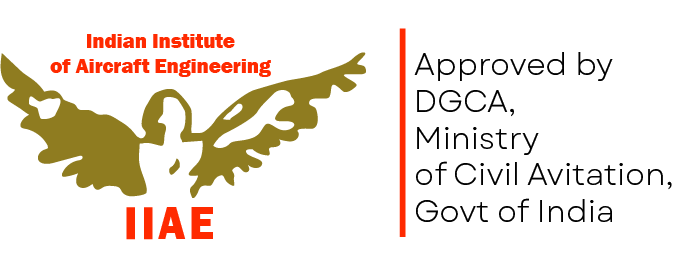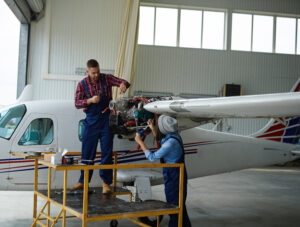Indian Institute of Aircraft Engineering (IIAE) Delhi is an approved Maintenance Training Organisation (MTO) engaged in providing Training to 10+2 (PCM) pass students in the field of Aircraft Maintenance Engineering CAR 147 (Basic) Level by following 2 years (2400 Hours) of Training Program approved by the Aviation Regulator (DGCA) in line with EASA (European Aviation Safety Agency) and ICAO (International Civil Aviation Organisation).
Almost every country in the world follows the Unified Aviation Guidelines of ICAO (International Civil Aviation Organisation), which ensures the same Aviation standard worldwide for the ease of Aircraft operation and safety. India among all the UNO member nations follows the same standard as mandated by the ICAO (International Civil Aviation Organisation)and regulated by the Aviation Regulator (DGCA) in India.
WHO REGULATES THE AVIATION STANDARDS?
In short, the Indian Civil Aviation Regulator (DGCA), Ministry of Civil Aviation, Govt. of India is responsible and empowered to make Rules to implement the Convention of 1944, relating to International Civil Aviation vide Section 4 of the Aircraft Act 1934. It is also mandated to make Rules, Regulations and Civil Aviation requirements (CAR)for Aviation Operation, Safety and Maintenance according to Section 5 of the Aircraft Act 1934, following the International Civil Aviation Organisation (ICAO)Guidelines. Under this Provision only and Rule 133 B of Aircraft Rule 1937, the Indian Institute of Aircraft Engineering (IIAE) Delhi is approved by the Indian Aviation Regulator (DGCA) as Aircraft Maintenance Training Organisation (MTO) under the Guidelines of CAR 147 (Basic).
WHAT PROCESS IS FOLLOWED FOR AME TRAINING?
The Indian Institute of Aircraft Engineering (IIAE), Delhi is one of the Best Aircraft Maintenance Training Organisation (MTO), who provides the teachings and training to the 10+2 (PCM) pass students in line with the Civil Aviation Regulator (DGCA) Car 147 (Basic) Aircraft Maintenance Engineering Course Curriculum, which is mandated to provide the individuals for 2400 Hours of Training, Spread over two years, with very high standard of Theoretical and Practical Classes including the Training in the Live Environment i.e. Training on Flying Aircrafts.
Along with the Module Subjects Theoretical Classes and Practical tasks in the Workshops and Laboratory, a student is made fully conversant with the Aircraft’s Complex Maintenance Procedures required to be followed, approved by the Aviation Regulator (DGCA)for the safe operation of the Aircraft.
NATURE OF AIRCRAFT MAINTENANCE CHECKS:
A key aspect of the AME is the Nature and Periodicity of the various Mandatory Checks needed to be carried out on an Aircraft to ensure its Continued Safety and Airworthiness. The different type of Aircrafts may require different Checks at the different intervals depending on the Original Equipment Manufacturer (OEM) Guidelines, Domestic Aviation Regulator (DGCA)and overall understanding of various checks is imperative. A general overview of the required Maintenance checks is as given below:
DESCRIPTION OF SCHEDULED AND UNSCHEDULED MAINTENANCE CHECKS
| TYPE | PERIODICITY | COMPLETION TIME | DESCRIPTION | |||
|
UNSCHEDULED MAINTENANCE CHECKS
|
||||||
| Pre-Flight | check Precedes every flight | 15 to 60 minutes
depending on the aircraft type |
It involves an inspection of the aircraft by the Cockpit Crew and Mechanics | |||
| Ramp Check | Carried out on a daily basis | 35 man-hours | Mechanics check the aircraft’s individual functions, inspect the Tyres and Brakes, and refuel the oil and Hydraulic fluids. The aircraft is also subjected to a visual check, both outside and inside the cabin
|
|||
| Service Check | Carried out on weekly basis | 55 man-hours | The ramp inspection is combined with Chores like Topping up the water, Air and Oil, as well as a Full cleaning of the Cabin.
|
|||
|
SCHEDULED MAINTENANCE CHECKS
|
||||||
| A- Level Check | 350-750 flight hours | Between 45 to 260 man-hours | It is Labour intensive and involves a visual examination of the Airframe, Powerplant, Avionics and accessories to ensure general conditions of the aircraft.
|
|||
| B- Level Check | around 750 flight
hours |
About 200 man-hours | It is labour intensive and involves a visual examination of the Airframe, Powerplant, Avionics and accessories to ensure general conditions of the aircraft.
|
|||
| C-Level Check | Every 18
months to 2 years |
Between 1,500- 2000man-hours
|
Detailed maintenance work is carried out, that entailsthorough inspections inside and outside, along withmeticulous examination of structures (load-bearing components on the Fuselage and Wings) and functions.
|
|||
| Engine Repair | Performed in aircrafts which have had 12,000 hours in the air and flown a distance of almost 10 Million Kilometers
|
Aircraft engines are put under a lot of strain. Thus, every engine in a four-engine Widebody Jet like the Airbus A380 may provide up to 34 tonnes of thrust. When such Massiveforces are at work, continuous inspection and maintenance are required to ensure therequired level of reliability.
|
||||
| Landing Gear | Carried out within 8 to 10 years | 3 to 5 days | To ensure that the Jolt of a very bad landing can be reliably withstood without any problems, Maintenance of landing gears is highly essential.
|
|||
| Intermediate
Layover (IL)
|
Performed every 3 to 5 years
|
About 2 to 4 weeks | A number of Large assemblies, such as the High-lift devices, are disassembled to allow easier access to the Fuselage and Wing structure for inspection. Several pieces of equipment and systems are tested and fixed at the same time. Cabin components such as Seats, Galleys and Toilets are also overhauled, and the Aircraft may be repainted if necessary.
|
|||
| D-Level Check | Performed every 6 to 10 years
|
About 30000 to 50000
man-hours
|
The entire Aircraft is practically dismantled and reassembled. Everything in the cabin is disassembled (Seats, Toilets, Galleys, Overhead bins) so engineers may examine the aircraft’s metal skin from the inside out. All of the Aircraft’s systems are Removed, Inspected, Repaired or Replaced, and then Reinstalled. Each D check is worth several millions of dollars.
|
|||
CONCLUSION:
The students of the Indian Institute of Aircraft Engineering (IIAE), Delhi are Fully Conversant, Rigorously Trained and Checked to deliver the best performance, while discharging their duties and responsibilities in the Aviation Industry. This Rigorous Training and Stiff Checking makes the Indian Institute of Aircraft Engineering (IIAE), Delhi trained students as the Most Sought after Professionals by the Airlines Industry in India and abroad. Over 3500 IIAE trained AME’S, serving almost all Major Airlines and Aviation Industry across the Continent is the Strength of IIAE Professionals capability to meet the expectations of Aviation Industry across the World in the days to come.
See this also:




